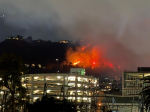
According to security experts, former President Donald Trump did not possess the legal power to declassify a secret U.S. nuclear weapons-related document that he is accused of illegally
possessing. This contradicts Trump's claim during his presidency. The document, identified as No. 19 in the indictment charging Trump with endangering national security, can only be declassified through a process outlined in the Atomic Energy Act, involving the Department of Energy and the Department of Defense.
Unlike the other 31 documents listed in the indictment, which are subject to declassification through executive order, the nuclear document has a distinct status. Steven Aftergood, a government secrecy expert with the Federation of American Scientists, explained that the nuclear weapons information was classified by law, not executive order. As a result, Trump's assertion that he could have declassified it holds no relevance in this case.
The unique classification of the nuclear-related information weakens the defense centered around declassification that Trump and his supporters have put forth. Prosecutors are likely to argue that declassification is irrelevant because Trump faces charges under the Espionage Act, which criminalizes the unauthorized retention of "national defense information." This encompasses a wide range of secrets that could benefit the nation's adversaries.
Document No. 19 bears the classification "FRD," which stands for Formerly Restricted Data. This classification is assigned to secret information concerning the military use of nuclear weapons. The indictment describes the document as undated and pertaining to the United States' nuclear weaponry.
Rules governing nuclear data stipulate that the process of declassification falls under the purview of the Atomic Energy Act of 1954. This act designates the Department of Energy as the overseer of the U.S. nuclear arsenal and defines the procedure for declassifying nuclear weapons data, some of the most highly guarded secrets of the U.S. government. Experts affirm that there is no provision in the statute allowing the president to make decisions regarding the declassification of such data.
The most sensitive nuclear weapons information is classified as "RD" or Restricted Data, encompassing warhead designs, uranium and plutonium production, and other crucial details, according to a Department of Energy guide. Under the guidance titled "Understanding Classification," the Department of Energy downgrades some nuclear weapons data from RD to FRD to facilitate sharing with the Department of Defense. However, these materials remain classified.
FRD materials include information on the size, storage, safety, locations, and power of the U.S. arsenal. According to a Justice Department FAQ sheet, the declassification of FRD information can only occur through a process governed by the Atomic Energy Act. The secretaries of energy and defense must determine that the designation "may be removed."
There is a difference of opinion regarding the president's authority to declassify nuclear data. David Jonas, former general counsel for the U.S. National Nuclear Security Administration, argued that Trump possessed the constitutional authority to declassify all classified documents based on the "unitary executive theory." This theory maintains that Congress cannot restrict the president's control over the executive branch. However, other experts dispute this view.
Elizabeth Goitein, a national security law expert at the Brennan Center for Justice, pointed out that the U.S. Constitution grants Congress the power to limit presidential authority in matters concerning national security. She emphasized that Congress can legislate in this area. Thomas Blanton, director of the National Security Archive, supported this stance, noting that while the president can request declassification of FRD materials, the process involving both the Department of Energy and the Department of Defense is time-consuming. Photo by Gage Skidmore from Peoria, AZ, United States of America, Wikimedia commons.






































